Inside: Learn how to clean your bathroom fixtures and faucets eliminating hard water deposits, limescale, calcium deposits, mold, and mildew using white vinegar!
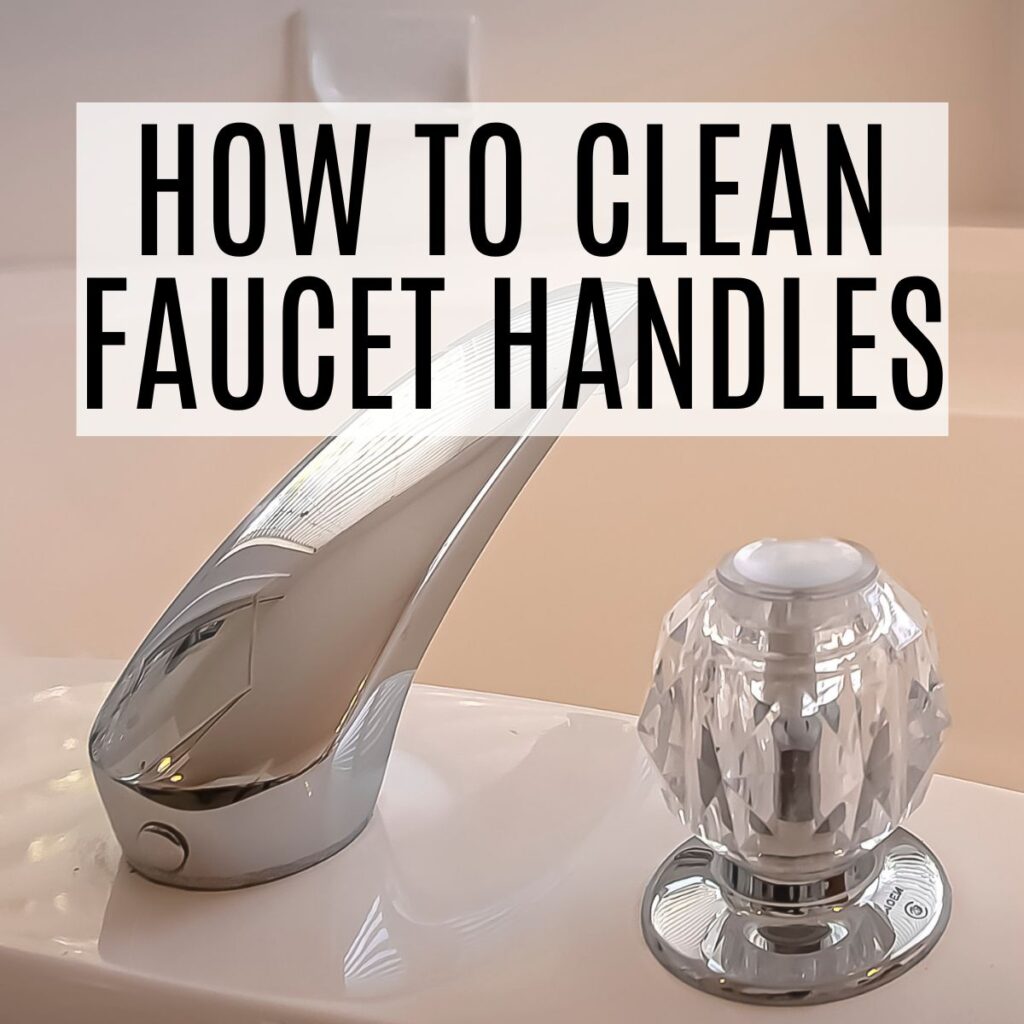
In a few of our bathrooms, we still have the older faucet handle that is clear crystal. They are more difficult to keep clean.
The bathroom faucets get dirty with calcium buildup and sometimes mold and mildew.
I would much rather clean using common household items instead of commercial cleaners if I can. White vinegar contains acetic acid which is not only great for cleaning, but it also disinfects too. See my 25 genius vinegar hacks that will blow your mind all while saving you money!
While you're at it, use my no scrub method to clean soap scum and hard water stains from shower doors.
How To Clean Bathroom Faucets
To start, you will want to remove the front-end cap from your faucet handle. Just use a flathead screwdriver to remove the cap.
While the handle is soaking you can now clean up around your faucet. Just use a microfiber cloth or rag and some vinegar to clean it. Wipe it down until all of the calcium build up and mold is gone.
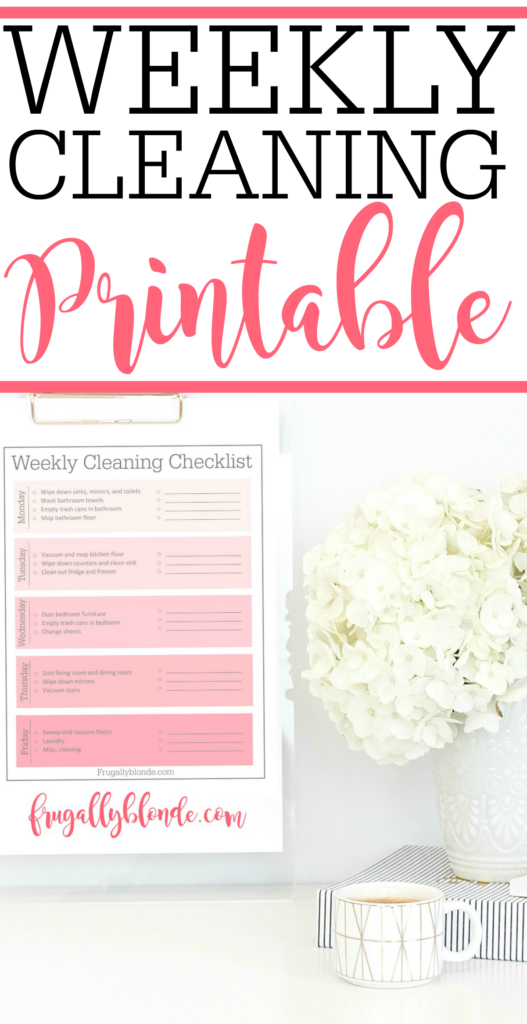
Free Weekly Cleaning Printable
Clean your home in under 30 minutes a day with this free Weekly Cleaning printable!
After the handle is finished soaking then take a power brush or old toothbrush (I love this power brush for cleaning) clean the inside it. All of the mold and calcium build up should just easily scrub away. Scrub the end cap too if it needs it.
What If I Can't Remove the Plumbing Fixtures?
Some faucets and hardware are not as easy to take apart and require turning off the water and actually detaching them. Let's skip this part and make it a little easier. If you have a dirty shower head, kitchen faucet, or any other faucet head showing signs of mineral buildup you can use this cleaning trick.
Note that vinegar can take off or damage a faucet's finish depending on the metal it is made out of. Oil rubbed bronze and brass fixtures should only be cleaned with water and a mild dish soap.
STEP 1: Fill a plastic bag (like a Ziplock) with white vinegar and secure it where the mineral deposits are using chip clips, clothes pins, or a rubber band.
STEP 2: Let it soak for 20 minutes. Wipe with a soft cloth and rinse with hot water.
If you find there is still hard water buildup or general grime, repeat the process. Just be sure to rinse or use a damp cloth to wipe it down once you are finished.
STEP 3: Use a dry cloth to get rid of the water spots for a polished look.
Helpful Tips
- Avoid using stiff sponges (like steel wool) and abrasive cleaners. Even on chrome fixtures and stainless steel faucets, these can cause scratches.
- If you have a new faucet that is under warranty, be sure to check the manufacturer's instructions. Sometimes it can be voided if harsh cleaners have been used or if you go against their instructions.
- It's a good idea to clean the bathroom and shower fixtures regularly so the buildup isn't as bad. Typically you won't even have to use vinegar, just a mild soap.
- Always use a clean cloth when going over metal surfaces. You never know what cleaning products was used on the cloth before they could possible react with the metal or matte finishes and accidentally cause damage.




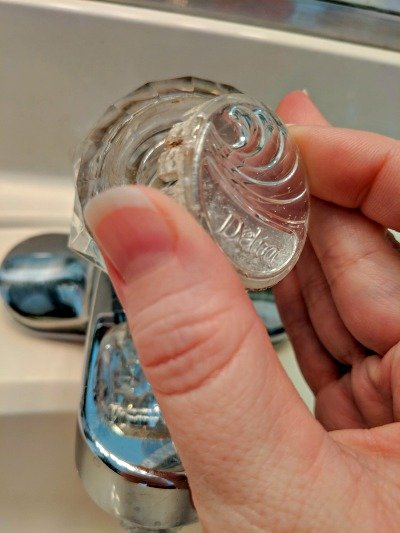
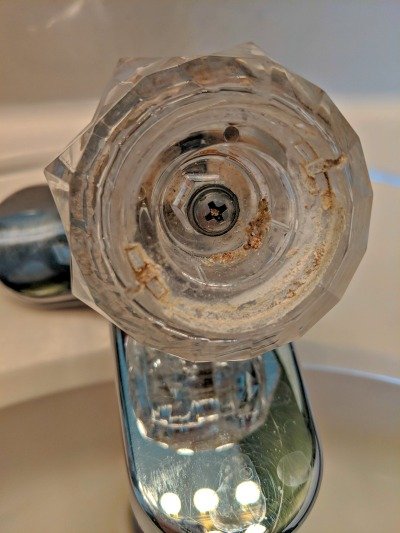
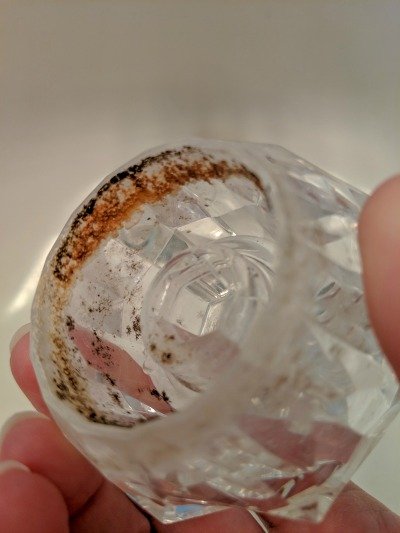
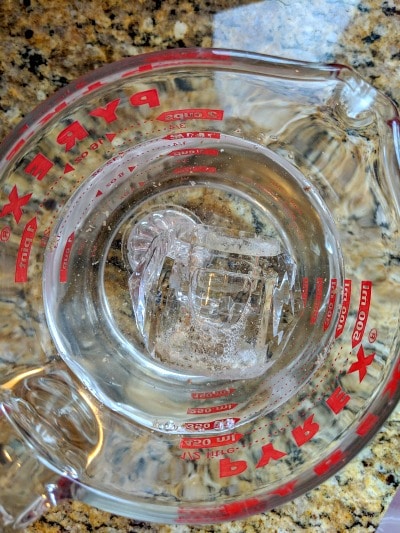
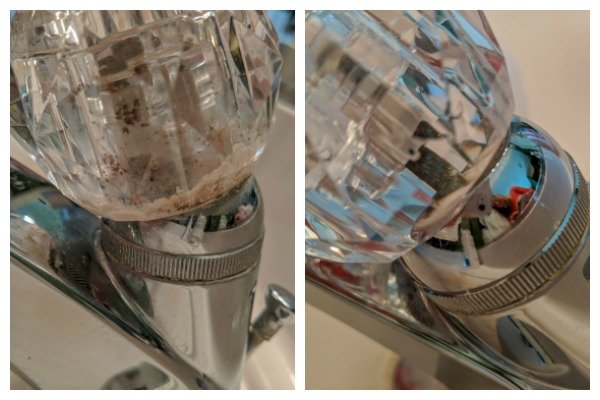
Leave a Reply